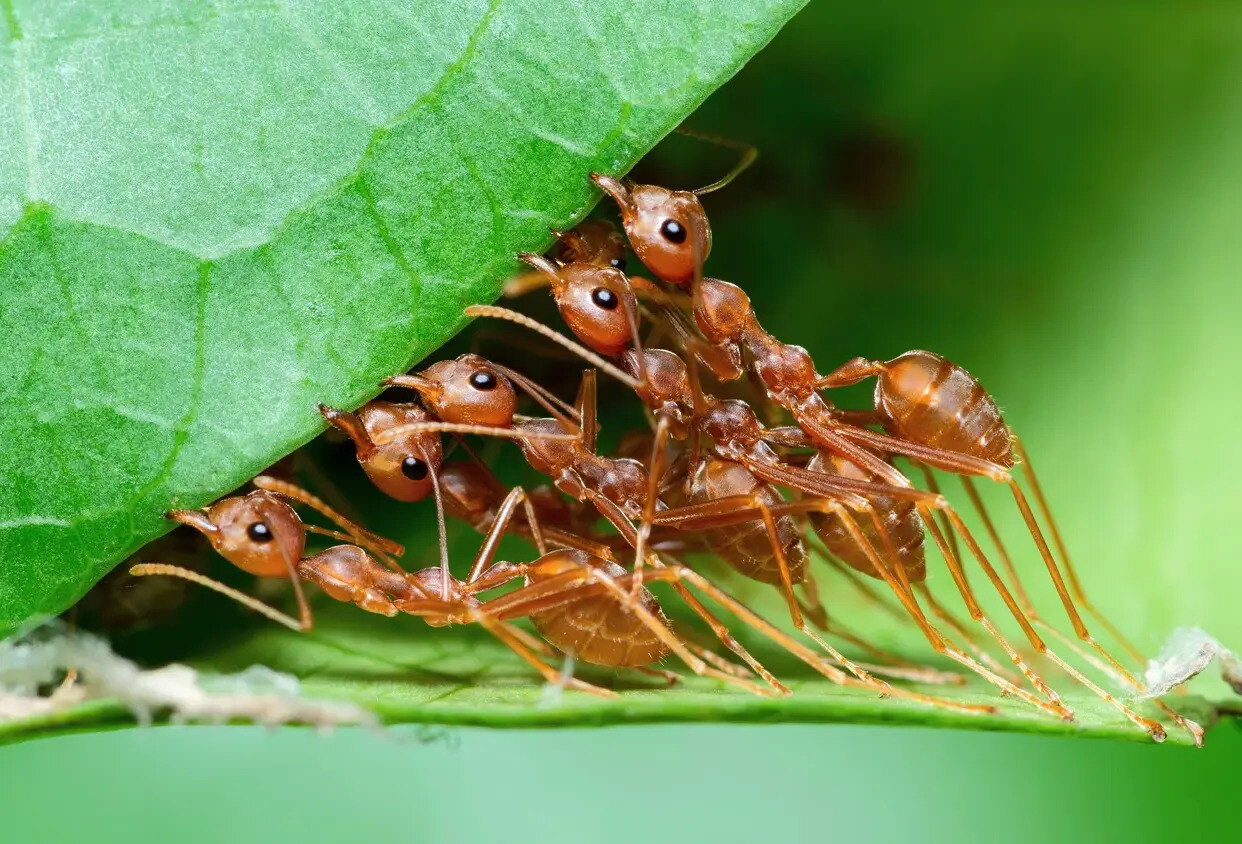
Ants are tiny yet fascinating creatures that have roamed the Earth for millions of years. Ever wondered how many species of ants exist? Over 12,000! These industrious insects can be found almost everywhere, from your backyard to the deepest jungles. Ants are known for their incredible strength, capable of lifting objects 50 times their body weight. They communicate using chemicals called pheromones, creating complex social structures and teamwork that rival human societies. Some ants even farm fungi or herd aphids for food! Intrigued? Let’s dive into 25 amazing facts about these remarkable insects that will leave you in awe of their tiny world.
Ants: Tiny but Mighty
Ants are fascinating creatures that have been around for millions of years. They are small but incredibly strong and intelligent. Let's dive into some amazing facts about these tiny titans.
-
Ants have been around for over 100 million years, even before the dinosaurs went extinct.
-
There are more than 12,000 known species of ants, and scientists believe there could be up to 22,000 species in total.
-
Ants can lift objects 50 times their own body weight. Imagine a human lifting a car!
-
The largest ant colony ever found was over 3,700 miles wide, spanning across Europe.
-
Ants communicate with each other using chemicals called pheromones. These chemicals help them find food, alert others to danger, and even mark trails.
Ant Societies and Roles
Ants live in highly organized societies with different roles for each member. Let's explore how these roles contribute to the success of their colonies.
-
The queen ant's primary role is to lay eggs. Some queens can live for up to 30 years and lay millions of eggs in their lifetime.
-
Worker ants are responsible for foraging, caring for the queen's offspring, and maintaining the nest. They are all female and do not reproduce.
-
Soldier ants protect the colony from predators and other threats. They have larger heads and stronger mandibles compared to worker ants.
-
Male ants, also known as drones, have one job: to mate with the queen. After mating, they usually die shortly afterward.
-
Some ant species have specialized roles, such as leafcutter ants, which cut leaves to cultivate fungus for food.
Ants and Their Habitats
Ants can be found in almost every corner of the world. Their adaptability allows them to thrive in various environments.
-
Ants are found on every continent except Antarctica. They can live in forests, deserts, grasslands, and even urban areas.
-
Some ants build intricate underground nests with multiple chambers and tunnels. These nests can be several feet deep and house thousands of ants.
-
Weaver ants create nests by stitching leaves together using silk produced by their larvae.
-
Army ants are nomadic and do not build permanent nests. Instead, they form temporary bivouacs by linking their bodies together.
-
Fire ants build large mounds above ground and can cause painful stings if disturbed.
Ants and Their Diet
Ants have diverse diets that vary depending on their species. Let's look at what these tiny creatures eat.
-
Many ants are omnivores, eating both plants and animals. They consume seeds, nectar, insects, and even small animals.
-
Some ants, like the honeydew ants, farm aphids for their sweet secretions. They protect the aphids from predators in exchange for the sugary substance.
-
Leafcutter ants cut leaves to feed a special fungus they cultivate. This fungus is their primary food source.
-
Harvester ants collect and store seeds in their nests. They can gather enough seeds to last through harsh seasons.
-
Army ants are known for their aggressive hunting behavior. They swarm over prey, overwhelming it with sheer numbers.
Unique Ant Behaviors
Ants exhibit some unique behaviors that set them apart from other insects. Here are a few intriguing examples.
-
Some ants practice "herding" by keeping other insects, like aphids, as livestock for their sweet secretions.
-
Ants can form living bridges with their bodies to cross gaps and obstacles. This teamwork allows them to reach food and new nesting sites.
-
Certain ant species engage in "slave-making," where they raid other ant colonies to capture and enslave their workers.
-
Ants have been observed using tools, such as dropping pebbles into water to raise the water level and access food.
-
Some ants have symbiotic relationships with plants, living in their hollow stems and protecting them from herbivores in exchange for shelter and food.
Ants: Tiny Marvels of Nature
Ants are fascinating creatures with complex behaviors and impressive abilities. They can lift objects many times their own weight, communicate using chemicals called pheromones, and form intricate colonies with specialized roles. Some species even farm fungi or herd aphids for food. Their social structures and teamwork are so efficient that humans study them for insights into organization and problem-solving.
These tiny insects play crucial roles in ecosystems, from aerating soil to controlling pests. Despite their small size, ants have a massive impact on the environment and human life. Next time you see an ant, remember there's much more to these little critters than meets the eye. They’re not just pests; they’re essential players in the natural world. So, appreciate their hard work and marvel at their tiny yet mighty existence.
Was this page helpful?
Our commitment to delivering trustworthy and engaging content is at the heart of what we do. Each fact on our site is contributed by real users like you, bringing a wealth of diverse insights and information. To ensure the highest standards of accuracy and reliability, our dedicated editors meticulously review each submission. This process guarantees that the facts we share are not only fascinating but also credible. Trust in our commitment to quality and authenticity as you explore and learn with us.


